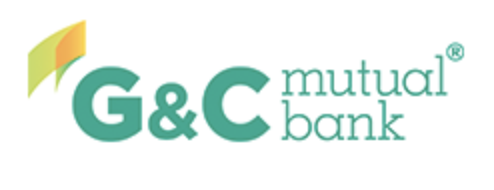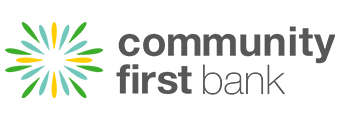
As of early 2024, more than 13 million credit cards are in circulation in Australia. It’s one of the most popular forms of borrowing, which might seem confusing considering rates are typically signifcantly higher than you might expect to pay on a personal loan, for example.
Interest on credit cards can be a bit more complicated, with a few different rates involved - and if you pay off your bill within the ‘interest free period’, you might not need to pay any interest at all! Here’s how credit card interest rates work, and some of the ways to minimise your interest bill.
See Also: Credit Card Repayment Calculator
What is the purchase rate on a credit card?
The purchase rate is the interest rate that applies to most purchases you’ll make on your card.
A credit card is basically a line of credit you can use up until you hit the limit. Every time you don’t repay what you spend within your lender's ‘interest free' period, you’ll be charged interest on the outstanding balance, at the purchase rate.
-
A typical interest-free period ranges between 44 and 55 days, but some credit cards might have a shorter or longer period. Once the period is up, any outstanding amount owed starts to accrue interest.
-
Importantly, this means that you don’t have 55 days from each purchase to make a repayment. If for example, you bought a fridge on day 25, you then only have 30 days to repay this amount until you will be charged interest.
Interest free periods typically consist of a statement period (usually 30 days), then a following grace period to pay off purchases made during the statement period (the rest of the interest free period). Interest starts to be calculated as soon as a purchase is made, but provided the balance is paid off in full before the due date, it is not charged.
| [Ascent Premium ] | 0 | [Receive a welcome bonus of 150, 000 Membership Rewards points when you apply online by 25 June 2024, are approved, and meet the minimum spend criteria of $5, 000 in the first 3 months. Available to new Card Members only. Receive a $450 Platinum Travel Credit each year, which can be redeemed for eligible flights, hotels, car hire or unique experiences. Transfer your points to a choice of 10 major Airline Reward Partner Programs including Qantas Frequent Flyer and Velocity Frequent Flyer Complimentary access for you and a guest to over 1, 400 Airport lounges across 140 countries and counting. Complimentary domestic and overseas travel insurance. Smartphone Screen Insurance for up to $500 for screen repairs to your Smartphone when you pay for your smartphone with your Platinum Card, either outright or on a monthly contract., ] | 0 | 0 | 20 | $product[$field["value"]] | 0 | AMEX | More details | ||||
Disclosure | |||||||||||||
American Express Platinum CardDisclosure
| |||||||||||||
| N/A | 0 | [No Cash Advances. No surprise charges. You’ll pay no interest or late payment fees – just a simple monthly fee. No Use, No Pay. If you don\'t make any purchases and have an outstanding balance of $0 during the whole statement period we\'ll reverse your monthly fee. No foreign currency fees. Save money on international purchases, online or overseas. Predictable Payments. Your minimum payment is fixed based on your credit limit, giving you certainty of what to pay each month. Apple Pay, Google Pay, Samsung Pay. From 13 September 2024, the monthly card fee for the NAB StraightUp Card will be increasing to $20 per month for credit limit $1, 001-$2, 000 and $30 per month for credit limit $2, 001-$3, 000. , ] | 0 | 0 | 0 | $product[$field["value"]] | 0 | Visa | More details | ||||
Disclosure | |||||||||||||
NAB StraightUp CardDisclosure
| |||||||||||||
| N/A | 0 | [Minimum credit limit : $1, 000 Card replacement fee (Australia) : $15 Apple Pay, Google Pay, Samsung Pay, ] | 0 | 0 | 15 | $product[$field["value"]] | 15.49 | Visa | More details | ||||
Disclosure | |||||||||||||
G&C Mutual Bank Low Rate Visa Credit CardDisclosure
| |||||||||||||
| N/A | 0 | [Low ongoing variable interest rate 0% p.a. on balance transfers for 12 months. Same ongoing rate for retail purchases, cash advances and balance transfers Up to 55 days interest free. Additional card available for $0. Minimum credit limit $500 Low annual fee of $40. Half the annual fee ($20) donated to the McGrath Foundation every year you hold the card. Choose a credit limit from as little as $500 and up to $15, 000. Access to the worldwide Visa network. Replacement of Visa card (within Australia) $12.50 Replacement of a Visa Card (overseas) $55 Apple Pay, Android Pay, Google Pay, Samsung Pay, ] | 0 | 0 | 25 | $product[$field["value"]] | 8.99 | Visa | More details | ||||
Disclosure | |||||||||||||
Community First Bank Low Rate Pink Credit CardDisclosure
| |||||||||||||
| N/A | 0 | [3.99% p.a. 6 month introductory rate on balance transfers, purchases and cash advances. 8.99% p.a. ongoing rate on purchases and cash advances. Up to 55 days interest free on purchases. Half of the $45 annual fee is donated to the Defence Bank Foundation and goes towards providing specially-trained assistance dogs to veterans living with post-traumatic stress disorder (PTSD). Minimum credit limit. $1, 000.00 Visa cards reported lost or stolen overseas- Foreign currency conversion fee, percentage of value of transaction. - Emergency overseas Visa replacement fee. US$175 - Emergency overseas Visa cash advance fee. US$175 Apple Pay, Google Pay, Samsung Pay , ] | 0 | 0 | 20 | $product[$field["value"]] | 8.99 | Visa | More details | ||||
Disclosure | |||||||||||||
Defence Bank Foundation Credit CardDisclosure
| |||||||||||||
| N/A | 0 | [Low ongoing variable interest rate 0% p.a. on balance transfers for 12 months* Same ongoing rate for retail purchases, cash advances and balance transfers Up to 55 days interest free. Additional card available for $0. Low annual fee of $40. Half the annual fee ($20) donated to the McGrath Foundation every year you hold the card. Choose a credit limit from as little as $500 and up to $15, 000. Access to the worldwide Visa network. Replacement of Visa card (within Australia) $12.50 Replacement of a Visa Card (overseas) $55 Apple Pay, Google Pay, Samsung Pay, ] | 0 | 0 | 25 | $product[$field["value"]] | 8.99 | Visa | More details | ||||
Disclosure | |||||||||||||
Community First Bank Low Rate Blue Credit CardDisclosure
| |||||||||||||
| N/A | 0 | [Overseas ATM withdrawal: $5 Minimum credit limit $1, 000 Maximum credit limit: $25, 000 Annual fee waived for the first year, ] | 0 | 0 | 15 | $product[$field["value"]] | 12.99 | Visa | More details | ||||
Disclosure | |||||||||||||
MOVE Bank Low Rate Credit CardDisclosure
| |||||||||||||
How is interest calculated on a credit card?
Like most loans, interest on a credit card is calculated daily by multiplying the outstanding amount owed by the per annum (annual) purchase rate, then dividing this by 365. As soon as the purchase is made, interest begins to accumulate, but it is not charged until the interest free period has been exceeded.
Credit Card Interest Example
To explain this a little better for you, here’s an example.
John Smith spends $2,000 on April 1, on his credit card interest rate with a purchase rate of 16% p.a. Statement periods are every 30 days, and his interest free period is 55 days.
By dividing 0.16 by 365 days, you get 0.000438, which is the equivalent daily interest rate John pays.
By the end of his statement period on April 30, John has accumulated $26.28 (0.000438 x $2,000 x 30 days) in interest. However, provided he repays the $2,000 off by May 25, he will not need to pay it.
Once he passes this deadline though, interest begins to be charged. Generally, once an interest free period has expired, any subsequent purchases are immediately charged interest.
If John still doesn’t pay by May 25, and spends another $1,000 on a fridge on the 26th, his daily interest bill will be calculated based on an outstanding balance of $3,000.
What are the other interest rates on credit cards?
When comparing credit cards, you might notice other rates different from purchase rate.
Annual Percentage Rate (APR)
Often used interchangeably with purchase rate, APR refers to the annual cost for using the credit card. It differs from the purchase rate in that it also includes fees and other associated costs, so it’s a more complete picture of total cost. It’s similar to the comparison rate lenders have to show alongside the nominal interest rate on home and car loans.
Introductory rate
Some credit cards offer a temporarily lower ‘introductory’ rate to entice new customers. This might be as low as 0%, and can last for anything from about 6 months to 2 years. Once this period is up, the rate reverts to the standard purchase rate.
Balance transfer rate
Similarly, some providers offer temporary low, even 0%, rates for ‘balance transfers’, where a customer with an outstanding balance with one lender transfers it to another. The new lender essentially pays off the existing loan, then the customer repays them. If the customer repays in full during the balance transfer period, they are then charged interest at the far lower balance transfer rate.
Balance transfers might have lower rates but there are typically fees for transferring your balance over, usually 1-2%. So if you had a $2,000 balance, you would pay $20 to $40. In some special offer scenarios these fees might be waived as well.
Revert rate
If there is still an outstanding balance when the balance transfer or introductory period expires, it might move to a revert rate, often called the variable cash advance rate. This is often higher than normal purchase rates, so if you’re considering a balance transfer, it’s important to make sure to repay it all in time.
Cash advance rate
Unlike normal purchases, there tends to be no interest free period for withdrawing cash using a credit card. Interest begins to accumulate immediately, until the amount borrowed is paid back, at the cash advance rate, which is typically higher than the purchase rate.
If you’re withdrawing money via your credit card, you’ll want to be paying it back as soon as possible.
How to reduce paying interest on a credit card
There are few ways to minimise or avoid paying interest on your purchases.
1. Stick to the interest-free period
The only way to avoid paying any interest is to pay off your purchases during the ‘interest-free’ period. You’ll still have to pay any account fees for maintaining the card, however.
2. Pay off more than the minimum repayment
To reduce the amount of interest paid, consider paying off more than the minimum repayment by the due date. This will also help reduce the amount of money owed on the card and, in turn, will help you pay off the debt sooner. If you stick to the minimum repayment, a simple $100 purchase could balloon out in total cost and take a long time to pay off.
3. Stick to a repayment schedule and spend within your means
To remember your due dates, consider setting calendar reminders each month or, if your provider allows it, set up a direct debit to avoid the hassle of remembering.
Credit cards can be useful tools for people looking to take advantage of rewards programs and for other perks like purchase protection, and travel benefits. They can also help you make the most of your budget, without missing out on anything in life. However, the interest you pay for not repaying off your bill can be steep.





